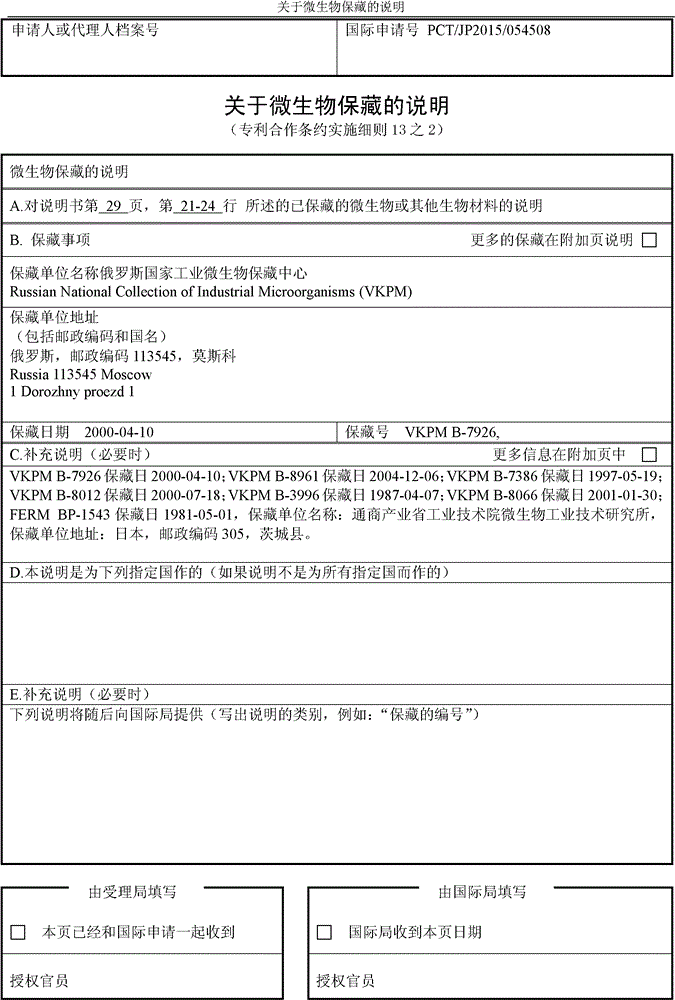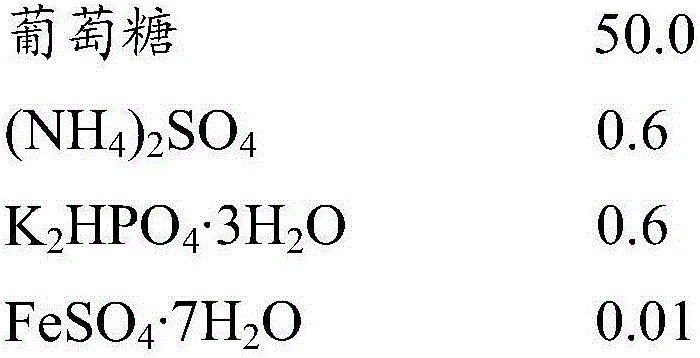A METHOD FOR PRODUCING AN L-AMINO ACID USING A BACTERIUM OF THE FAMILY ENTEROBACTERIACEAE HAVING OVEREXPRESSED THE yajl GENE
An amino acid, overexpression technology, applied in microorganism-based methods, biochemical equipment and methods, bacteria, etc., can solve problems such as yajL genes that have not been reported and proven
- Summary
- Abstract
- Description
- Claims
- Application Information
AI Technical Summary
Problems solved by technology
Method used
Image
Examples
Embodiment 1
[0141] Example 1. Construction of Escherichia coli producing L-valine strains modified in the manner of overexpressing the yajL gene
[0142] 1.1 Construction of the Escherichia coli MG1655 strain that has modified the yajL regulatory region
[0143] Using a method called "λRed / ET-mediated integration" developed by Datsenko K.A. and Wanner B.L. (Datsenko K.A. and Wanner B.L., Proc.Natl.Acad.Sci.USA, 2000,97(12):6640-6645 ) changed the expression of the yajL gene in Escherichia coli. According to this procedure, PCR primers P1 (SEQ ID NO:3) and P2 (SEQ ID NO:4) were constructed, which are adjacent to the yajL gene and confer chloramphenicol resistance (Cm R ) region of the gene and the region adjacent to the promoter in the template chromosome are both homologous. The chromosome of chloramphenicol-resistant Escherichia coli MG1655 strain, which contains a tac-like promoter with lacZ upstream -35 region as TGGCCA (from the 5'-end to the 3 '-end) structure (see Table 1, Katash...
Embodiment 2
[0149] Example 2. Passage of E. coli H81P tac7 - Production of L-valine by the yajL strain
[0150] The modified Escherichia coli H81P tac7 -yajL and control E. coli H81 strains were cultured in LB medium (also known as lysogenic broth or Luria-Bertani medium, as described in Sambrook, J. and Russell, D.W. "Molecular Cloning: A Laboratory Manual", 3 rd ed., Cold Spring Harbor Laboratory Press (2001)) at 32°C for 18 hours. Then, 0.2 mL of the obtained culture was inoculated into 2 mL of fermentation medium in a 20 × 200-mm test tube and cultured on a rotary shaker (250 rpm) at 32 °C for 66 h to OD 550 to about 29 until glucose is consumed.
[0151] The composition (g / L) of fermentation medium is as follows:
[0152]
[0153] Fermentation medium was sterilized at 116 °C for 30 min except for glucose and CaCO 3 Sterilize separately as follows: Glucose was sterilized at 110 °C for 30 min while CaCO 3 Sterilize at 116°C for 30 minutes. The pH was adjusted to 7.0 by addin...
Embodiment 3
[0158] Example 3. Construction of an L-phenylalanine-producing Escherichia coli strain modified in a manner of overexpressing the yajL gene
[0159] Will P tac7 The -yajL fragment was introduced into Escherichia coli DV269 (TyrA-LAA) strain, also known as Escherichia coli MG1655htrE:(P L -yddG)[MUDaroG4-pheA fbr -aroL], as described in Example 1, subsection 1.3. Escherichia coli MG1655P tac7 -yajL strain (see Example 1.1) was used as donor. The construction of Escherichia coli DV269 (TyrA-LAA) strain is described in Doroshenko V.G. et al., Construction of an L-phenylalanine-producing tyrosine-prototrophic Escherichia coli strain using tyrA ssrA-like tagged alleles, Biotechnol. Lett., 2010, 35:1117-1121. On the plate containing LB medium, agar (1.5%) and chloramphenicol (20mg / L), selection containing P tac7 - E. coli DV269 (TyrA-LAA) mutant of the yajL cassette. Escherichia coli H81DV269(TyrA-LAA)P thus obtained tac7 -yajL strain.
PUM
 Login to View More
Login to View More Abstract
Description
Claims
Application Information
 Login to View More
Login to View More - R&D
- Intellectual Property
- Life Sciences
- Materials
- Tech Scout
- Unparalleled Data Quality
- Higher Quality Content
- 60% Fewer Hallucinations
Browse by: Latest US Patents, China's latest patents, Technical Efficacy Thesaurus, Application Domain, Technology Topic, Popular Technical Reports.
© 2025 PatSnap. All rights reserved.Legal|Privacy policy|Modern Slavery Act Transparency Statement|Sitemap|About US| Contact US: help@patsnap.com



